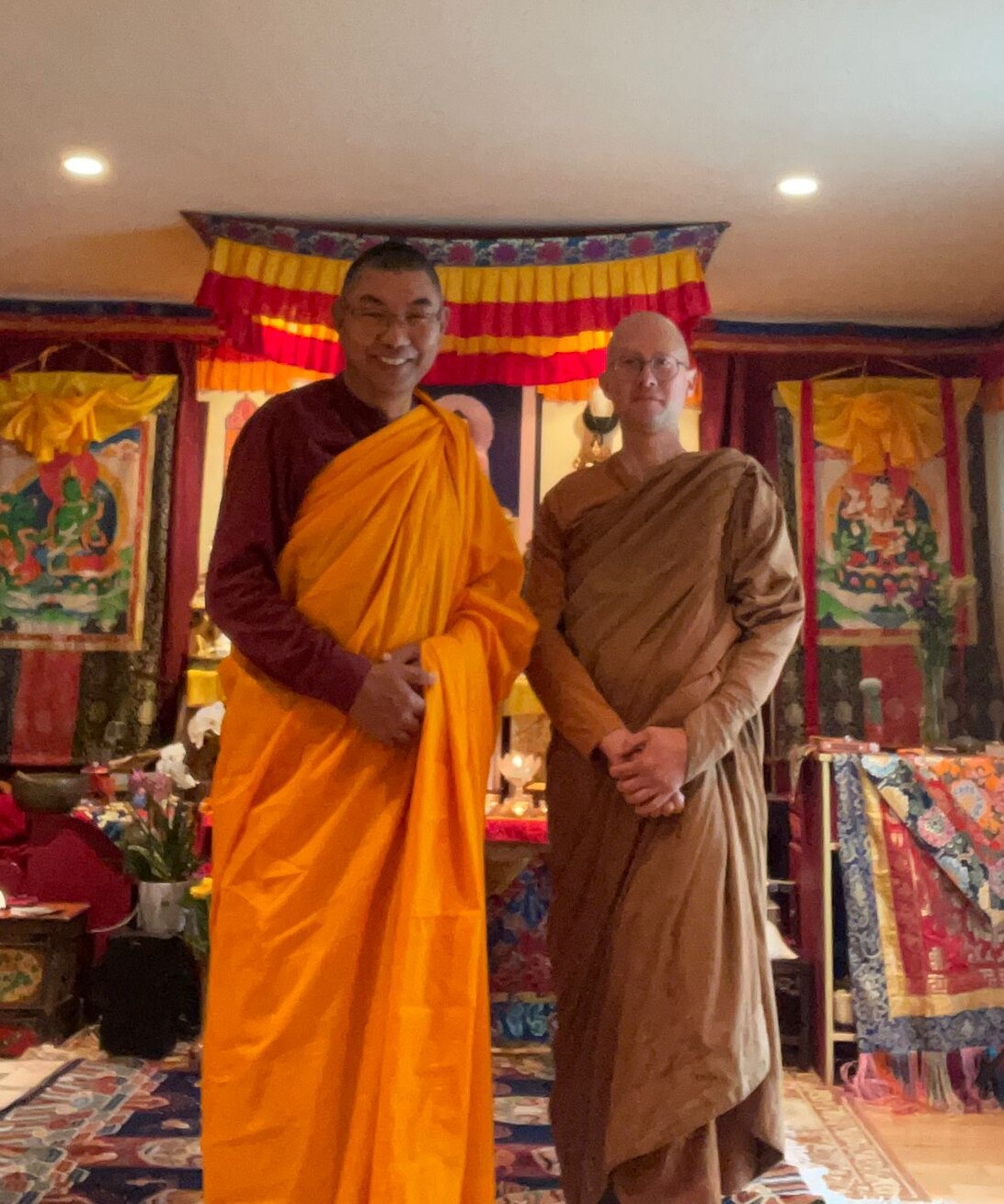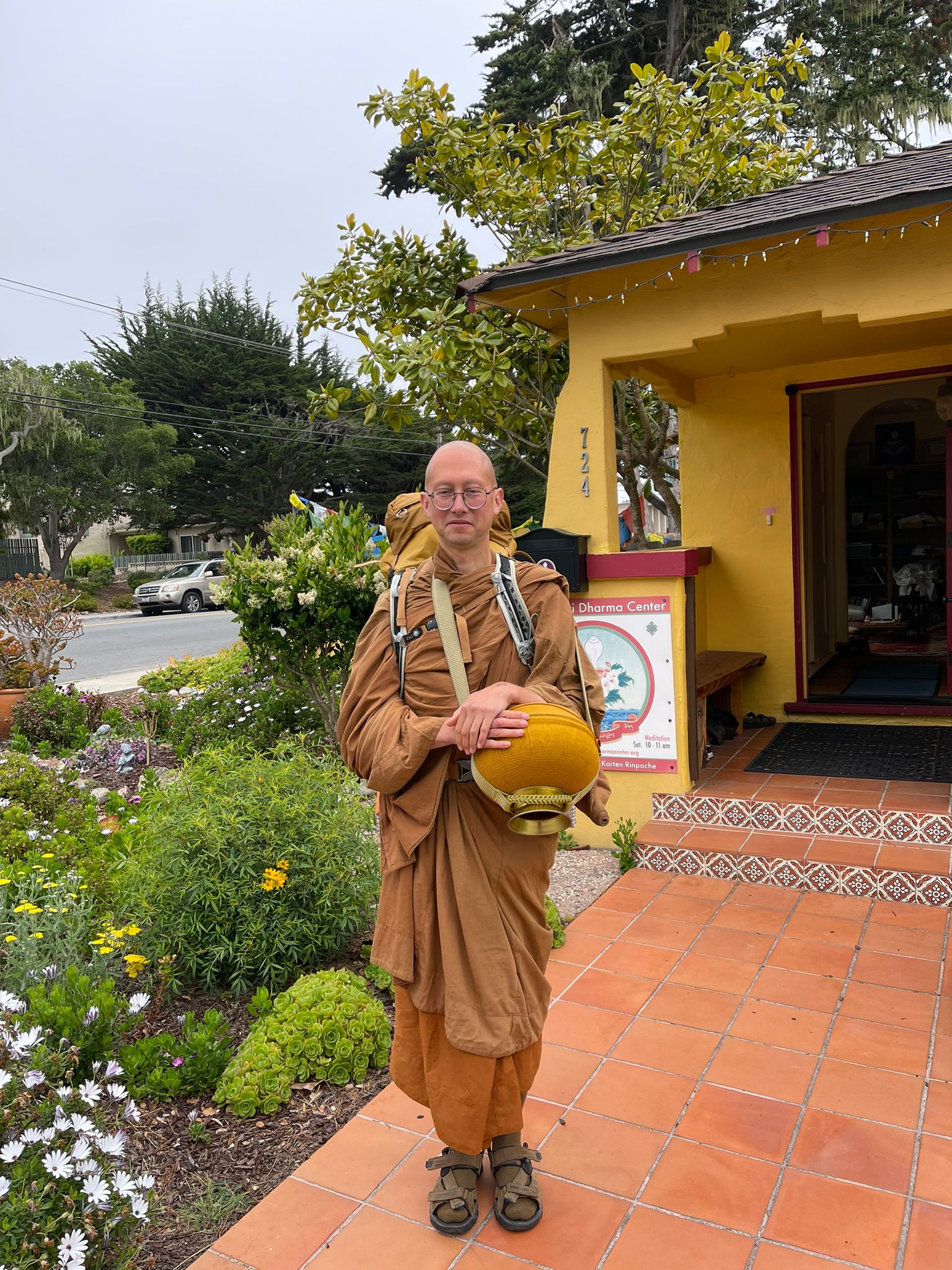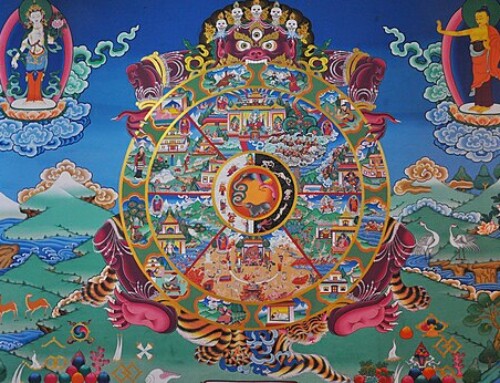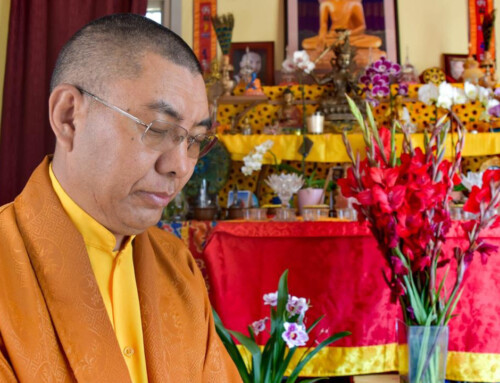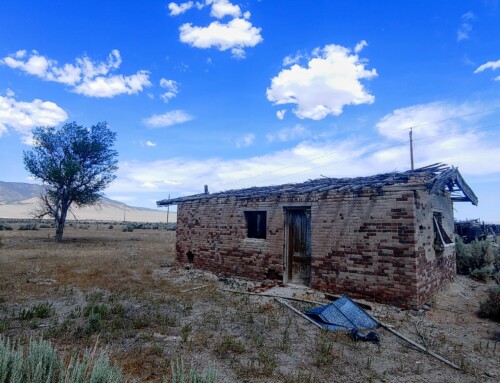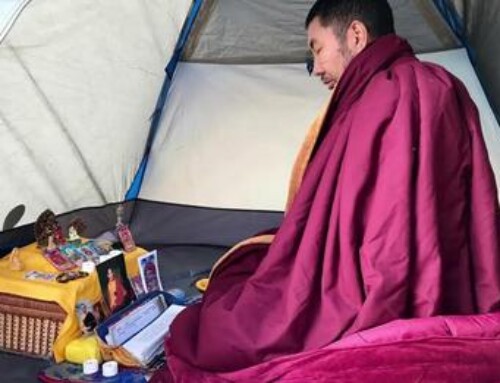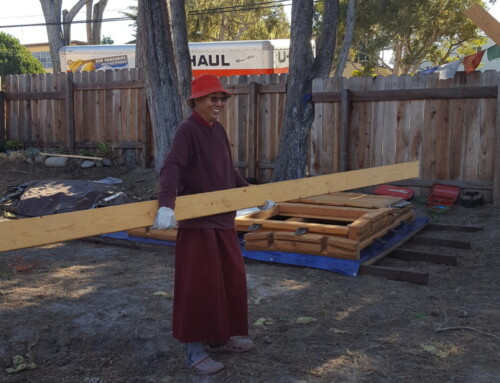One morning about three weeks ago, the MDC Board President David Winkler (Karma Dorje) contacted me; he told me that there was a monk who wanted to see me and possibly stay with me at the Manjushri Dharma Center. I asked Karma Dorje who this monk was. He responded that he was a young Theravada monk.
I asked David, could you give me a bit more information about this monk. To be honest, sometimes I feel a bit apprehensive to have people stay with me. I am here by myself, and have had a some problems in the past. David said that the monk is on pilgrimage, and that he wanted to stop by the Dharma Center and to stay for one night. He asked, “Is that OK with you?”. I said sure, if I know him, he can certainly stay, and asked David to send me his photograph. I then called a friend of mine, a Theravada Abbot, and explained the situation. My friend advised me, saying, nowadays, it is very hard to trust people; you must be careful. This made me a bit nervous. I then called Karma Palden (Miles McBreen) and David Molk (Jampa Tharcin), and asked for their advice. They sent me his information and said that he is a genuine monk. I then agreed.
I was very happy to provide lodging for him because I am also a Buddhist monk. Additionally, I very much respect the Theravada tradition. His lineage, he said, is from Thailand. Interestingly, in 2006 His Holiness the Dalai Lama sent me to Burma where I stayed for 6 months. I spent time at one of the biggest Theravada monasteries in the country. At the large monastery of thousands of monks, the monastery lacked a kitchen. Each day, all of the monks would leave the monastery and go to neighboring villages to beg for food. Once they collected alms in the begging bowl, they would return to the monastery, and the food they were given constituted their provisions for the rest of the day. They never kept food for the next day. I found their practices very much inspiring, and I greatly respected their conduct; they were very strict, yet very gentle and deliberate in their speech, their movements, how they look, etc., which were distinct from Tibetan traditions. Thus, I was very happy to offer him a place to stay.
Two or three days later, I received a knock and a young monk was standing at my door. His name is Tan Jāgaro. He said that he has been a monk for around 7 years. Here’s an excerpt of his biography from his website:
I began Buddhist practice in 2004 as a lay person after attending a meditation retreat. Inspired by the Pāḷi Canon and more contemporary masters, my confidence in the Buddha’s teachings increased over the years. I first visited Abhayagiri Monastery in 2012 and later practiced under Ajahn Pasanno and his community. In 2015 I went forth as a Sāmaṇera, and then in 2016 I took full Bhikkhu precepts. I left Ahayagiri in 2020 and have been traveling ever since. More recently, I have visited Suddhavāri Monastery and Empty Cloud Monastery.
He said that his father’s side is Japanese, and his mother’s side is Western. He stayed at my house for one day, and we spoke about Buddhadharma and about his practice and meditation. It was very interesting.
Jāgaro was walking by foot across California on his pilgrimage. I asked him where he stayed day to day. He responded that he Googled Buddhist Dharma Centers, communities, or organizations in the area. He then contacted the groups and requested to stay one night; that is how he finds where he will stay and how he found the MDC. He said that most of the time, people are very nice and generous and many invited him to stay with them. Otherwise, he would find a place to camp on his own.
Then in my mind, I asked myself, what does he mean by pilgrimage? In Tibetan, pilgrimage is referred to as nékor, which roughly translates to circumambulating a holy place. Né means an empowered, sacred, or holy place or person. Kora translates to revolution or circumambulation. Generally, these include like Bodhgaya in India, where Buddha Shakyamuni attained enlightenment, or holy places in Tibet, such as caves that Guru Rinpoche visited or the lake where he appeared on a lotus. In Tibetan, we say that for many, many years, Guru Rinpoche blessed the land; now, the land bestows blessing upon human beings. Therefore, it didn’t make sense to me because in the United States, we don’t have that kind of Buddhist pilgrimage site, only a few small Dharma Centers like mine and monasteries. I wasn’t sure where he was heading.
When I explained to him my understanding of pilgrimage, I then asked him, why are you doing this pilgrimage? He responded that he was going to cities and towns and his intention was to show people an example of what a Buddhist monk looks like. Many people have never seen a Buddhist monk before or don’t know how monks live. Those interested in Buddhist monks would be able to see him and talk with him. That’s why he is using monk robes, carrying all of his belongings in a knapsack, begging bowl, etc. His pilgrimage was several weeks long. On his website, he writes:
This monastic pilgrimage often called “tudong.” This is a Thai derived word for the Pāli word “dhutaṅga,” which means “austere practice.”
Before, I called Karma Palden (Miles McBreen) and I asked Miles if he would stay over with us as a guest because I thought he would be interested to meet the young monk, and so that he can talk with him better because my English isn’t fluent. These two had a conversation that night, and I believe that he and the monk became very good friends. Jāgaro stayed for one day, as the next morning he had to walk to the neighboring city of Marina, California.
Coincidentally, the next day was the 15th day and full moon of the month of Saga Dawa, called Saga Dawa Duchen, the “Great Occasion”, which commemorates the birth, enlightenment, and parinirvana of Lord Buddha Shakyamuni, the supreme and perfect Guru. As many of you know, we celebrated this auspicious day with a Buddha Shakyamuni Puja here at MDC. So, the next morning Miles picked him up from Marina to bring him back to the center for the Saga Dawa Duchen ceremony. He was elated and told me that he was very happy to see me again and be at the Dharma Center. He stayed another day, and was ready to depart the next morning. As he was preparing to leave, I carried his bag to my front door and noticed how heavy it was. I inquired whether he carried such a heavy bag around all day and asked what he had inside it. He responded that a lot of it was water, to which I replied it could be bought everywhere. He responded that he did not handle or touch money. I said to myself, wow, this is really a Theravada monk. Then, after having breakfast, I prepared a lunch to go and offered him this meal. He refused, saying that he preferred to go for “alms”. This meant standing outside a market or other place, patiently waiting for somebody to show interest in offering food. Even if he receives food, he never saves food for the next day. This is actually the Theravada tradition; monks cannot store food for the coming day, and this is what he does. As he mentioned on his website
“In keeping with my monastic rules, I will only accept food that is offered that day, not use money, and sleep wherever there is availability.”
This really made me feel nostalgic as it is reminiscent of Buddha’s times. I recently spoke with Tan Jāgaro, who just ended his 8-week pilgrimage in California. He was very happy and said that he met many people throughout his journey. To find information about his background, his journals, and also his route, you can check out his website:
This blog was dictated by Khenpo Karten Rinpoche in the month of June of 2023 to his student, Karma Choeying, upon meeting the Theravada monk Tan Jagaro and after the auspicious celebration of Saga Dawa Duchen.

